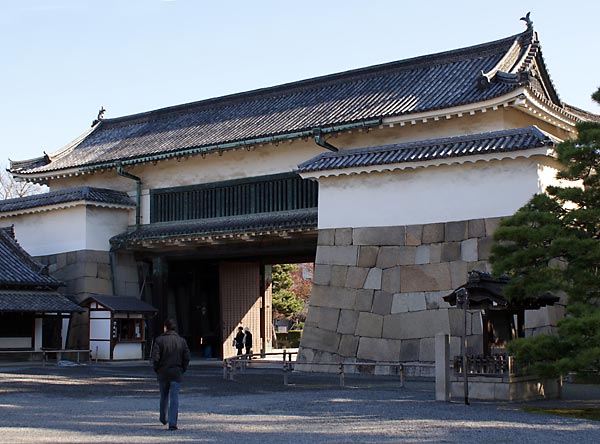
Kyoto, Day One
Dec. 7, 2008
Kyoto was the capital of Japan for about a thousand years, until the capital was moved to Edo (now called Tokyo) in 1868. Tokyo is accessible from the sea, while Kyoto is not. Foreign dignitaries wishing to open up Japan couldn't negotiate with the emperor while he was in Kyoto, since they were not allowed to travel in Japan. So the emperor moved the capital to Tokyo to be able to meet with them. Because of its historical and artistic significance, Kyoto was not bombed during World War II.

Our first stop for the day was Nijo Castle, which was the home of the shogun. The castle was originally built in 1603 and completed in 1626. During this period the effective political power rested with the shogun, who controlled foreign policy, the military, and feudal patronage. The emperor was, at that time, merely the ceremonial leader.
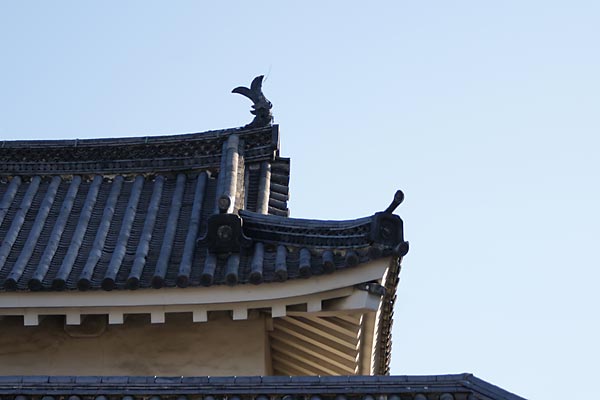
The fishtail on the roof of the gate, according to the myths of the time, protected the castle from fire. How can that be? Our guide said, "Fish swim in water, water prevents things from burning, so everything below the fishtail must be in water and can't burn." Despite this protection, the gate burned in 1750 and the palace burned in 1788.
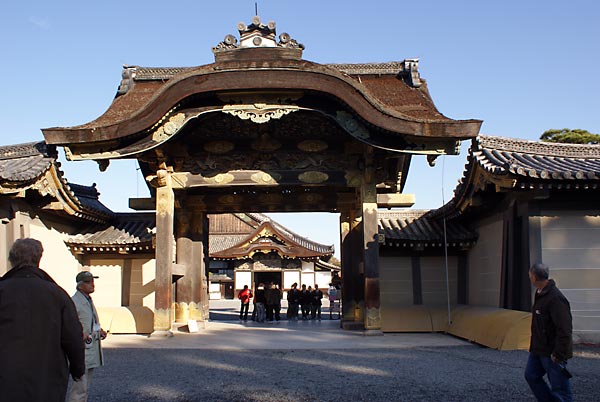
Passing through another elegant gate to get to the shogun's palace. When we entered the palace we had to remove our shoes and walk the long corridors with only socks on our feet. It was very cold. Photography inside the palace was not permitted.
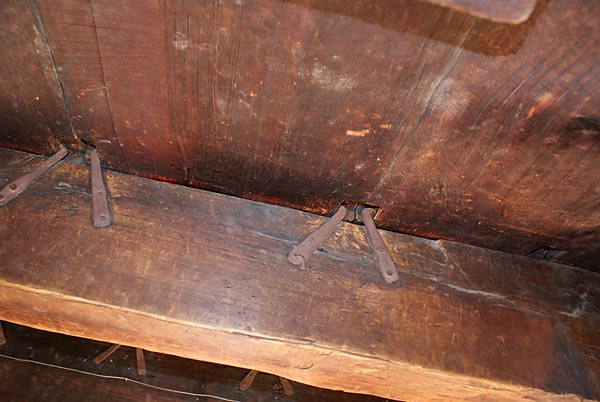
The floor of the palace corridors produced a squeaking sound when we walked on it. This was intentional, as we found out. The floorboards were held slightly above the floor joists by these pieces of metal. The floor boards moved up and down as someone walked on them, producing the squeaking sound. This design is called a Nightingale floor.
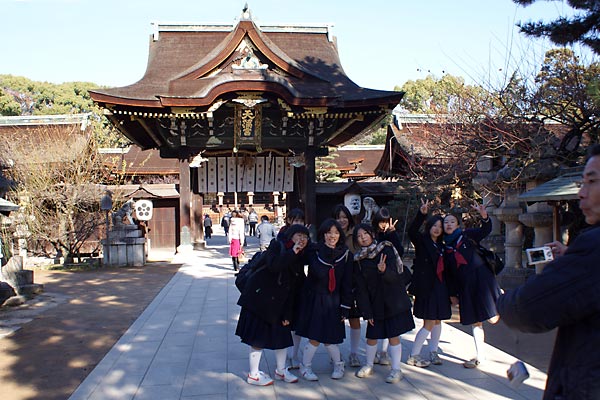
Our next stop was the Kitano Tenmangu Shrine, which is a Shinto shrine. This school group was also visiting the shrine. The "V" sign being made by them has nothing to do with Churchill and his "V for Victory" sign; it merely shows that they are happy. We saw people in China making the same sign when being photographed.
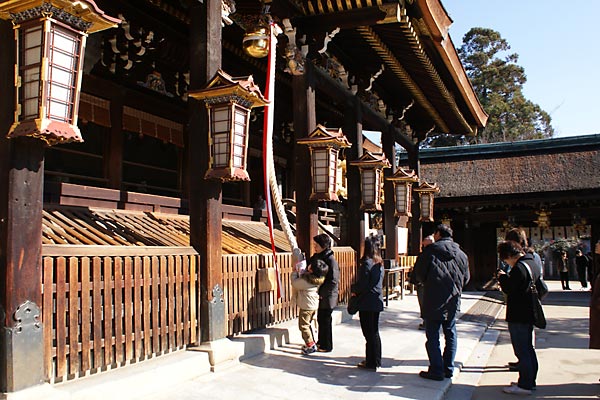
Waiting in line to pray. The worshippers first rang the bell, clapped twice, said their prayer, and then clapped once. We were told that this ritual was to get the attention of the Shinto gods, so your prayer could be received.
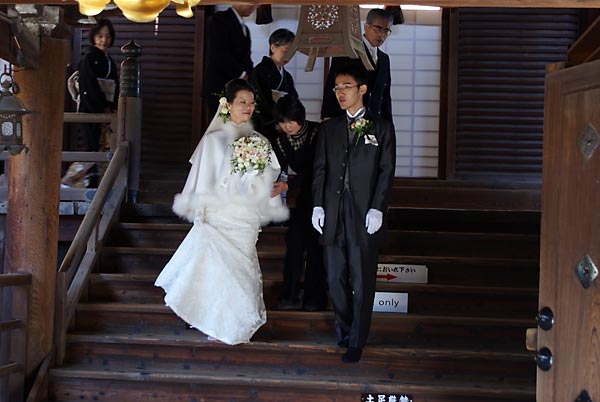
A wedding was taking place at the shrine. The bride and groom is emerging from the main hall of shrine. They are in stockings, and put on their shoes at the bottom of the steps.
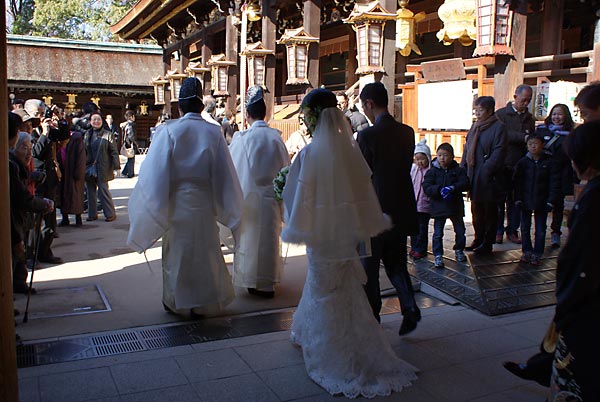
They were then escorted across the courtyard by these two priests.

Our next stop was the Golden Pavilion, which is one of the main buildings of
the Rokuon-ji temple. The top two floors of the pavilion are covered with gold
leaf. This setting, with the pond and the trees, is really very beautiful.
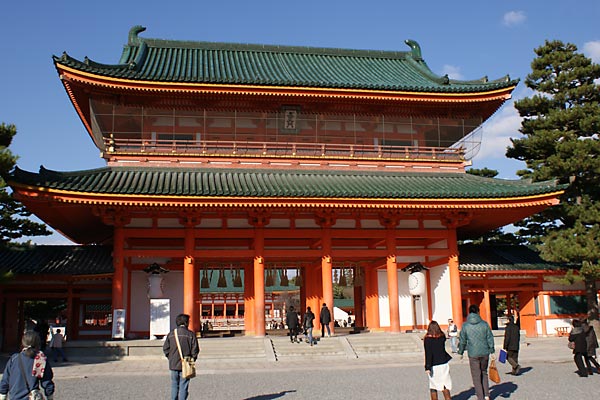
The gate for the Heian Shrine. It is a most impressive structure.

This young Japanese mother had brought her month old baby to the shrine. The kimonos, while very beautiful, appear to be worn only on special occasions. People on the street normally wore contemporary western clothing, and were usually dressed up more than we are usually do.
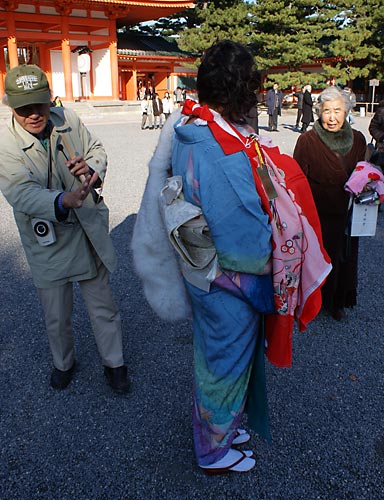
Our guide, on the left, used the young mother as a model to explain the Japanese kimono.
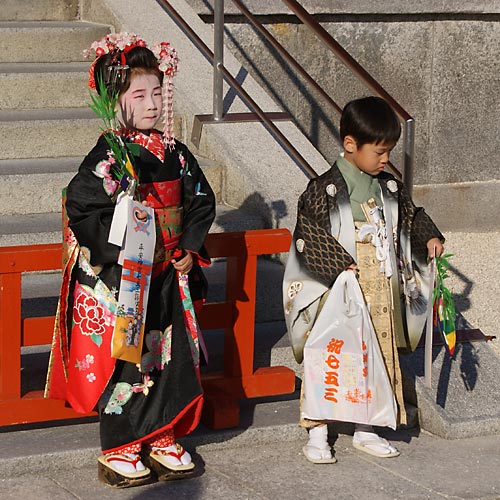
These two children were seen at the shrine. Our guide told us that children, when they are 3, 5, and 7 years old, are brought to the shrine to be blessed, so perhaps that is why these children are in traditional Japanese clothing.
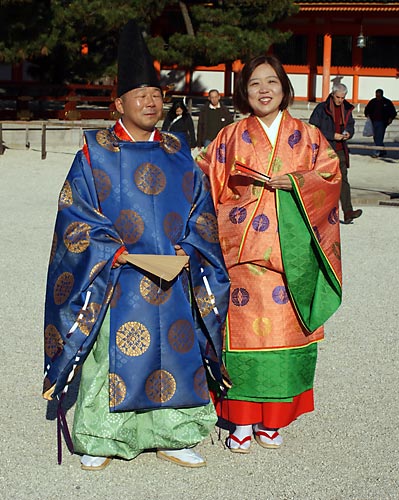
This couple was also spotted at the shrine. Our guide said that the man is dressed in the style of an ancient emperor. He seems to be enjoying being "king for a day!"
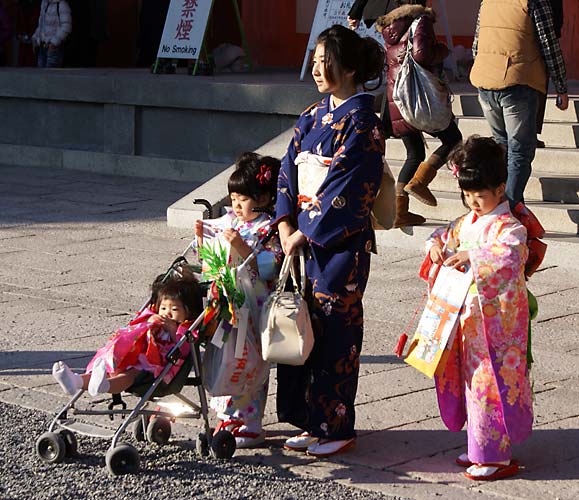
Another family all decked out in traditional Japanese clothing.
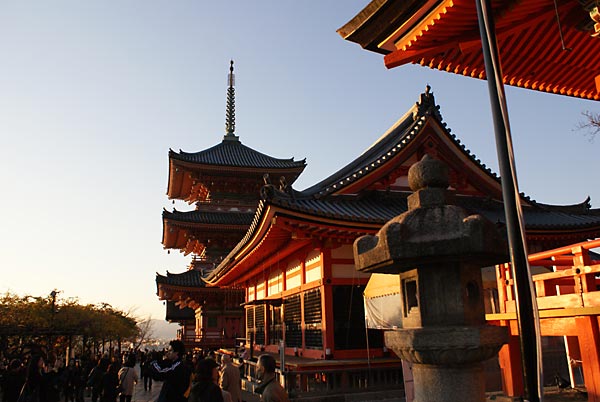
Our last stop for the day was the Kiyomizudera Temple. It is on a hillside overlooking Kyoto, and, from the crowds, seems to be a popular place for the Japanese to visit.
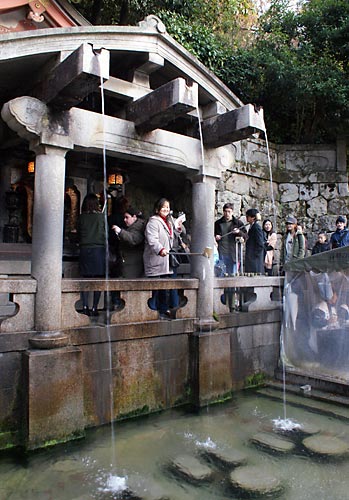
The pure waters of Kiyomizudera are said to cure all ills.
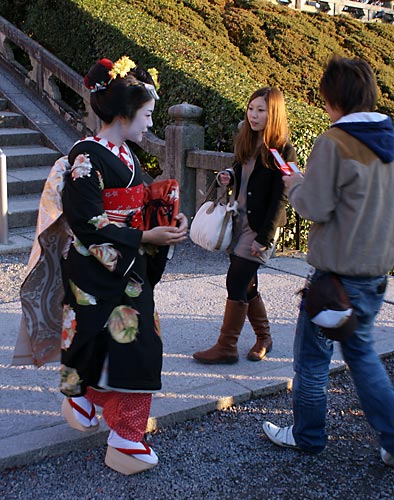
This young woman was dressed as a geisha girl, while her two friends were dressed in western clothing. Walking with those shoes would appear to be a challenge.